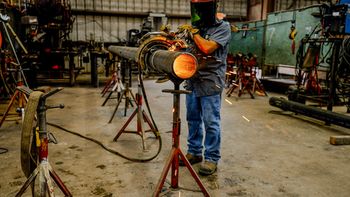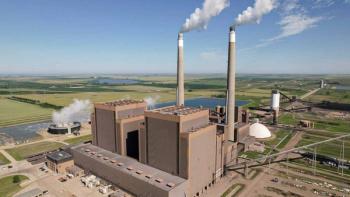
ANALYSIS OF AN OPTIMIZED CENTRIFUGAL COMPRESSOR PERFORMANCE MAP
This article is a follow-up of the Compressor Maps story published in the September/October 2022 edition of Turbomachinery International. To get up to speed, please read its predecessor online here: turbomachinerymag.com/view/compressor-maps
INTRODUCTION
The Evaluation, Design, and Optimization methods described in the 2022 Sept./Oct. issue of Turbomachinery International, pp. 22-26 were applied to obtain an optimized manufacturer’s compressor performance map. An optimized compressor map differs from a manufacturers compressor map in that it contains both compressor and driver information. The optimized compressor map is used to determine all possible compressor/driver operations within the map. Levels of Compression Horsepower (BHPrequired), Standard Volumetric Flow (Qstd), Discharge Pressure (Pd) based on knowing the Suction Pressure (Ps) are determined from compressor/driver information available. The pipeline and compressor simulations can now be analyzed separately knowing these operational parameters. Only the inlet and outlet of the individual pipeline segments between compressor stations need to be determined since the compressor station operations are already known.
SUMMARY
Centrifugal compressor performance map shown in Figure 1 differs from one provided by a manufacturer where Head versus Actual Volumetric Flow are replaced by Discharge Pressure (PD) versus Standard Volumetric Flow (Qstd). Another difference is that compressor/driver unit operations actually exists in Figure 1 at the operating points shown where as a typical manufacturer’s compressor map does not provide all possible operations of the compressor/driver unit. The horsepower (BHPrequired) needed at each of the operating points is also known. Therefore, each operating point contains the information needed to determine the compressor/driver unit operation.
ANALYSIS
The points shown in Figure 1 are the intersections of the compressor speed (50% - 105%) and compressor efficiency lines. The white oval is the Design Point (90% speed, 82.5 % efficiency). The points at the four corners of the compressor performance map were chosen for developing and bracketing the analysis. These four corners described below provide the complete operating range:
Corner 1 – Stonewall @ Maximum Speed
Corner 2 - Surge @ Maximum Speed
Corner 3 - Stonewall @ Minimum Speed
Corner 4 – Surge @ Minimum Speed
The operating parameters of Horsepower (BHPrequired), Standard Volumetric Flow (Qstd), Discharge Pressure (PD) for these corners are plotted versus compressor Suction Pressure (Ps) (See Figures 2 – 5).
A linear relationship appears to exists at all four corners between (BHPrequired), (Qstd), (PD), versus the Suction Pressure (Ps) and the possibility other points within the compressor map will also have a linear relationship with the Suction Pressure (Ps). Therefore, the same type of analysis was performed on the maximum efficiency line at the Design Point, Maximum Speed, and Minimum Speed points and the results also showed a linear relationship with the Suction Pressure (Ps) (See Figures 6 – 8).
DISCUSSION OF RESULTS
The results of the analysis (Figures 3, 4, 5, 6, 8) showed the majority of the points chosen have at least a 500 – 650 Psia Suction Pressure range of operation, however Figure 2 and Figure 7 have a limited (500 to 610 Psia) range at the Maximum Speed line due because the available driver horsepower is less than the compression horsepower required due to the increase of volumetric flow caused by increases in Suction Pressure.
CONCLUSIONS
Operational parameters like Horsepower, Qstd, and Discharge Pressure behave linearly relative to Suction Pressure within the optimized compressor performance map.
The compressor/driver unit operations on the maximum speed line can be limited due to available horsepower limitations caused by higher compressor Suction Pressures.
An optimized compressor performance map can be used to determine the parameters needed to simulate compressor station operations separately from pipeline segment simulations.
RECOMMENDATIONS
An optimized centrifugal compressor performance map needs to be generated and analyzed prior to purchasing a compressor/driver unit.
The range and flexibility of possible compressor/driver unit operations need to be considered prior to a compressor/driver unit purchase due to the effects of higher Standard Volumetric Flow (Qstd), on Compression Horsepower (BHPrequired) caused by increasing Suction Pressure (Ps).
Roberto A. Hein, P.E., retired engineer.
Phone: (915) 276-4346
Email: m.hein@sbcglobal.net
Newsletter
Power your knowledge with the latest in turbine technology, engineering advances, and energy solutions—subscribe to Turbomachinery International today.




